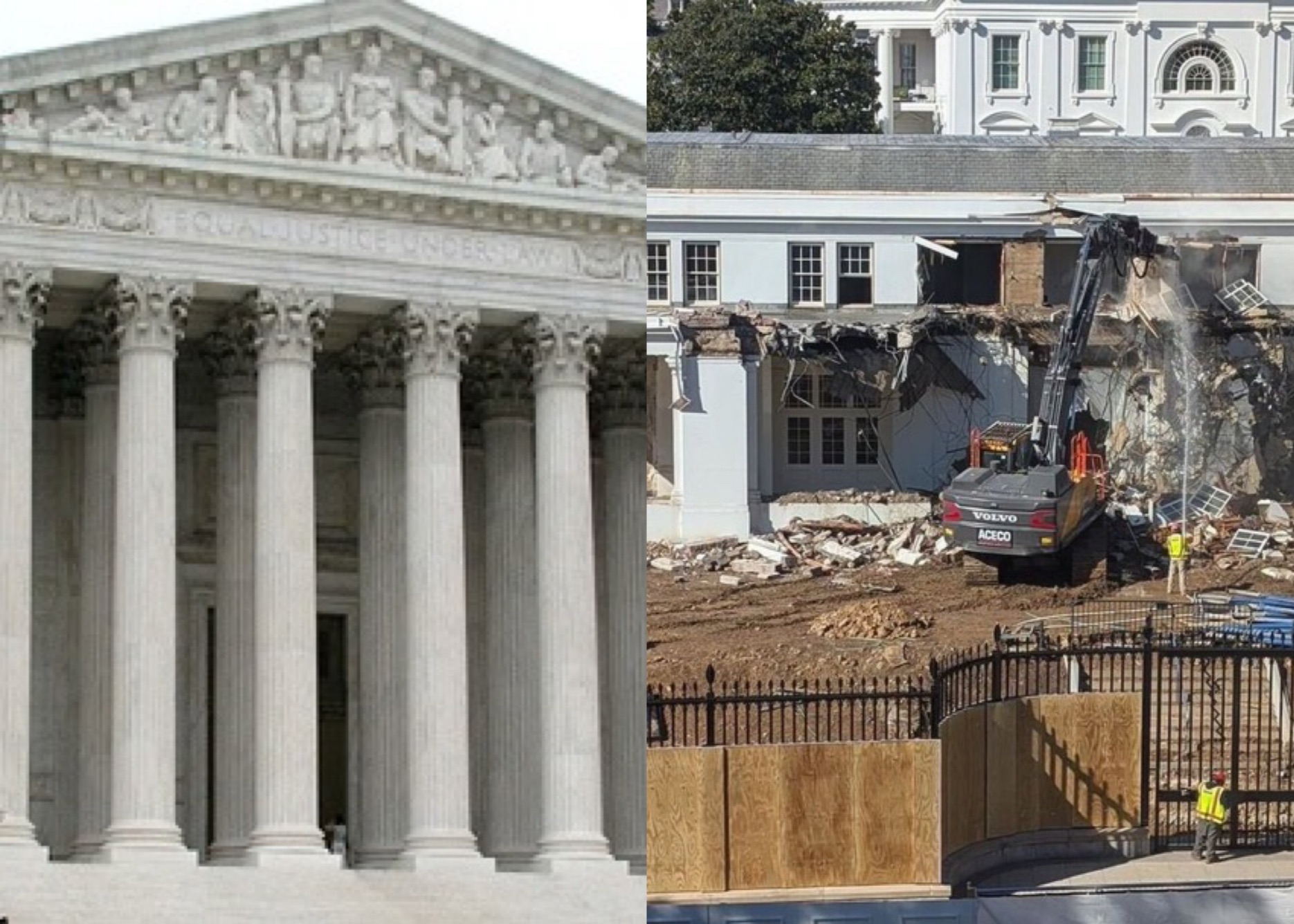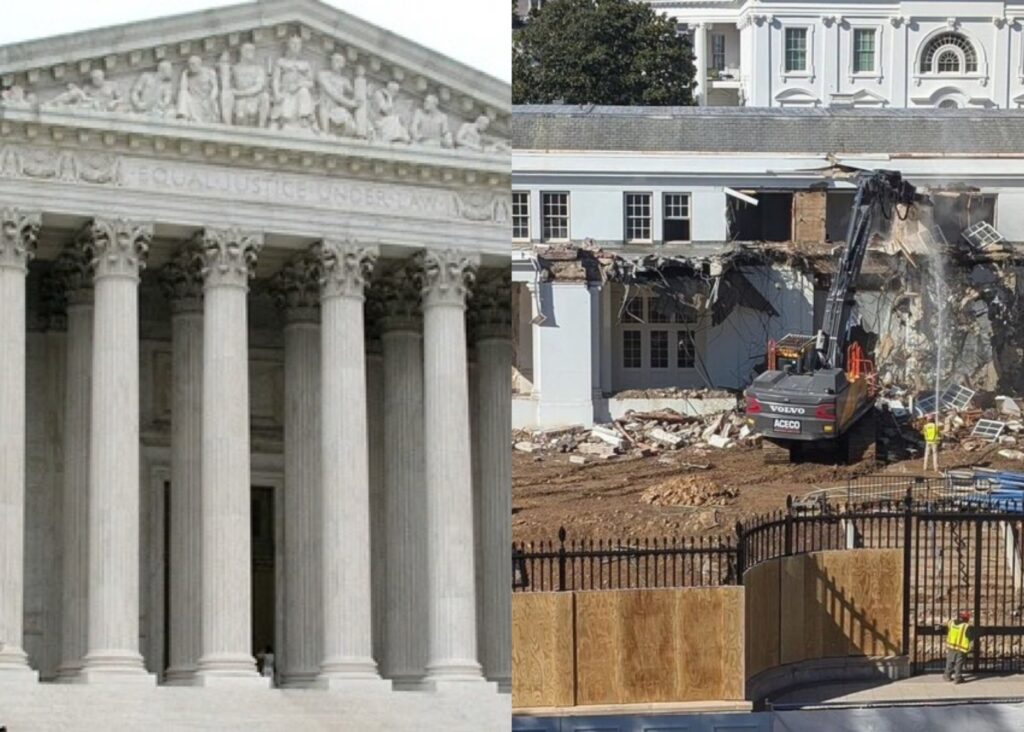NFL
Supreme Court Issues Emergency Injunction Halting Donald Trump’s White House East Wing Demolition For His Lavish Ballroom After National Trust for Historic Preservation Files $10B Lawsuit Alleging Violations of Federal Environmental and Heritage Protection Laws

Supreme Court Halts White House East Wing Demolition After $10B Lawsuit Accuses Trump of Violating Federal Preservation and Environmental Laws
Washington, D.C. — In a stunning development that has drawn national and international attention, the U.S. Supreme Court on Tuesday issued an emergency injunction temporarily halting further demolition of the White House’s East Wing, following a massive $10 billion lawsuit filed by the National Trust for Historic Preservation against President Donald Trump.

The lawsuit, filed late Monday in the U.S. District Court for the District of Columbia, accuses the president of violating the National Historic Preservation Act (NHPA) and the National Environmental Policy Act (NEPA) by authorizing the partial demolition of the East Wing to construct what aides have described as a “luxurious presidential ballroom and entertainment facility.”
Supreme Court Steps In
The Supreme Court’s unsigned order grants an injunction pending full judicial review, effectively freezing all construction and demolition activities at the White House. The Court cited “irreparable potential harm to a national historic landmark” and “substantial legal questions regarding the president’s compliance with statutory preservation and environmental requirements.”
The decision marks the first time in modern history that the nation’s highest court has intervened to halt physical alterations to the White House. Legal experts say the ruling underscores the judiciary’s willingness to assert oversight even over executive branch actions concerning federal property.
“This is a major victory for preservation and the rule of law,” said Stephanie Meeks, president of the National Trust for Historic Preservation. “The White House belongs to the American people. It is not a private estate to be altered at will. The president must follow the same laws that protect our nation’s heritage.”
Background of the Controversy
Reports surfaced earlier this month that crews had begun demolishing portions of the East Wing — home to the First Lady’s offices and historic reception areas — to make way for a proposed grand ballroom, which Trump described as a “world-class venue for diplomacy, state dinners, and celebrations of American greatness.”
Architectural historians and preservation groups immediately condemned the move, warning that the demolition would destroy irreplaceable elements of the White House designed during the Roosevelt and Truman administrations.
“This project was undertaken without proper environmental review or consultation with preservation authorities,” the lawsuit states. “The demolition constitutes a flagrant violation of federal law protecting historic structures and cultural resources.”
Trump Administration Responds
White House Press Secretary Katrina Pierson defended the president’s actions, insisting that the East Wing modifications were part of a “long-overdue modernization effort.”
“The president is ensuring that the People’s House reflects both America’s history and its future,” Pierson said in a statement. “We remain confident that the courts will ultimately uphold the president’s authority to renovate federal property in the national interest.”
However, critics argue that the project has little to do with modernization and everything to do with personal extravagance. Several former White House staffers have described the proposed ballroom as a “private entertainment venue” intended for high-profile Trump events and fundraisers.
Legal Experts Weigh In
Constitutional scholars say the Supreme Court’s swift action signals deep concern about potential executive overreach.
“This injunction doesn’t decide the case, but it sends a clear message,” said Prof. Linda Chen, a constitutional law expert at Georgetown University. “The Court is saying: even the president must obey the nation’s preservation and environmental laws.”
The case now returns to the lower courts for a full hearing on the merits, with the Supreme Court retaining the option to revisit the issue if either party appeals.
Public Reaction
Public opinion remains sharply divided. Preservationists and environmental groups celebrated outside the Supreme Court building, waving banners reading “Save the People’s House” and “History Over Vanity.” Trump supporters, meanwhile, accused the Court of politicizing the issue and obstructing the president’s agenda.
“This isn’t about law — it’s about hatred for Trump,” said one demonstrator. “He’s improving the White House, not destroying it.”
What Comes Next
Until the courts reach a final ruling, all construction and demolition must cease immediately. The injunction is expected to remain in place for several weeks as the case proceeds through federal court.
If the National Trust for Historic Preservation prevails, the White House could be required to restore the demolished sections — a costly process that experts estimate could exceed $2 billion.
As the legal battle unfolds, one question looms large: can a sitting president face penalties under laws designed to restrain his own branch’s actions?
For now, at least, the Supreme Court’s message is clear — America’s most famous residence is not above the law.












